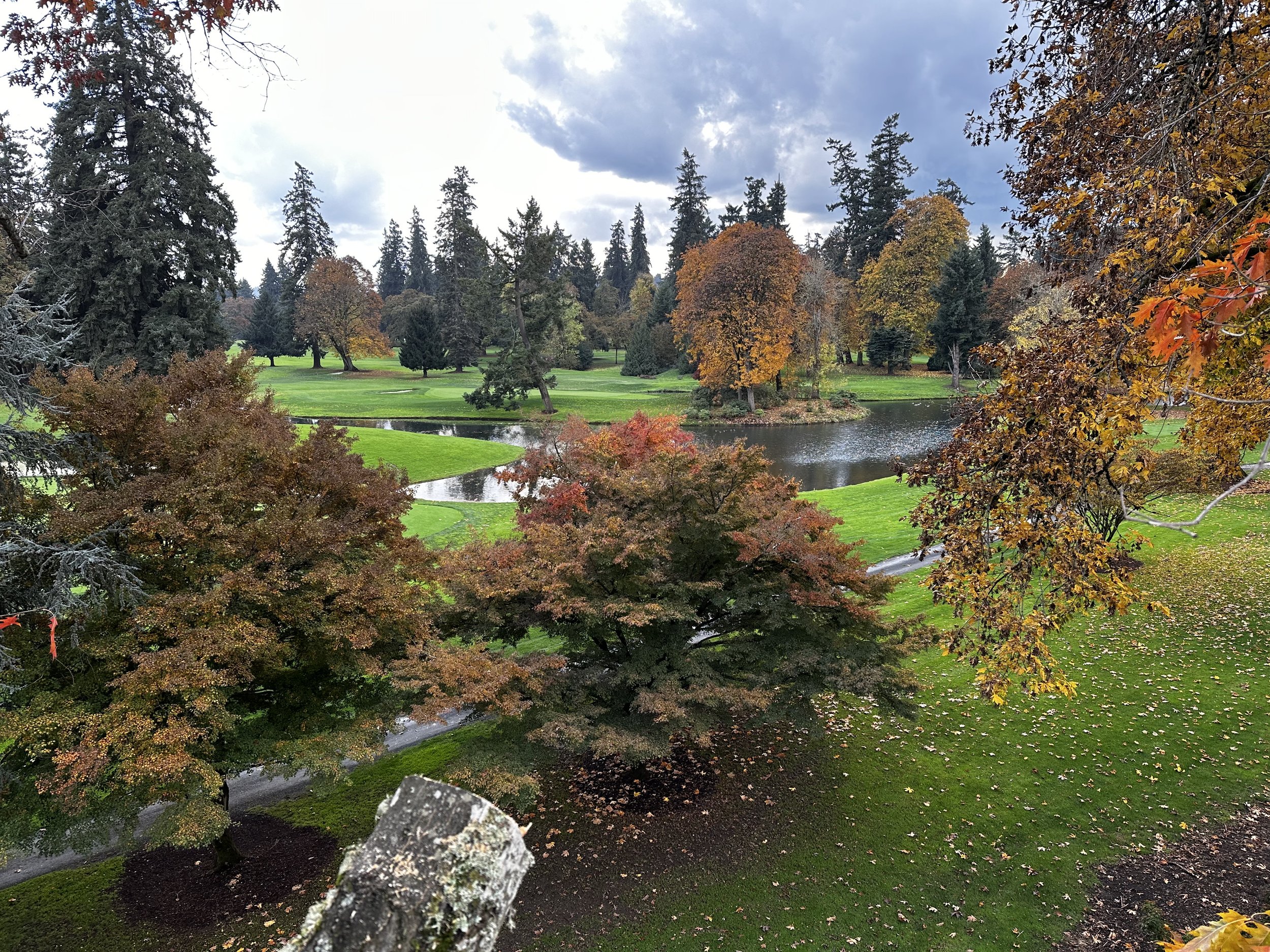
Let’s talk trees…
Consultation
1
What are you looking for?
Demian will come to your property to see the trees in question. He will offer his expertise, and ask you a few questions to help us understand what you are wanting with your trees.
2
Personalized suggestions.
We’ll share which direction we feel supports you and your trees best based on an assessment of your trees and your property.
3
Choose your course of action.
From here we can make decisions for your trees; cleaning up, airing out, thinning, pruning, limbing, bracing/cabling, or removal.
"It’s difficult to know what’s best for our trees. Demian’s eye and experience helped us to make informed decisions based on the many environmental factors he brought to light during our Consultation. We have a myriad of trees on our land, many large firs, a thriving orchard of both new and old fruit trees, and privacy hedges, all which he was able to access and make a plan for care annually. It feels comforting knowing he will visit the trees yearly to access and tend to their needs without having to remove any of them. "
— Emily R., EUGENE CLIENT
FAQs
General Tree Care
Q: What services do you provide?
We offer a full range of tree care services, including:
• Tree pruning and trimming
• Tree removal
• Tree planting
• Consultations on tree health • Emergency/storm cleanup
• Risk assessment and clearance reports
Q: How often should trees be pruned or trimmed?
Most trees benefit from maintenance every 1–3 years, depending on species, age, and location. We recommend pruning in late winter or early spring for optimal results.
Q: What’s the difference between trimming and pruning?
- Trimming is focused on shaping and clearing space from buildings, roads, and power lines.
- Pruning removes dead or hazardous branches and supports long-term tree health and safety.
Q: Is tree removal always necessary?
No — removal is a last resort. We evaluate each tree carefully and recommend removal only if it's diseased, dying, poses a safety risk, or is causing property damage.
Safety, Licensing & Crew
Q: Are you licensed and insured?
Yes. Wolfpack Tree Care is fully licensed, bonded, and insured for your peace of mind.
Q: Do you use certified arborists?
Our team includes certified professionals with deep local experience in Oregon tree species and urban forestry practices.
Q: Do you offer storm or emergency services?
Yes — we provide 24/7 emergency response for downed limbs, fallen trees, and storm cleanup in the Eugene area.
Quotes & Pricing
Q: Do you offer free estimates?
Absolutely. Estimates and quotes are 100% free, with no pressure or obligation.
*We also offer Consultations, which means we work with you to map out a plan for your trees over the course of weeks, months or even years. No contracts, just a longer term solution to help you manage your trees and their future.
Q: What factors affect the cost of tree work? Pricing depends on:
• Tree size and location
• Service type (pruning, removal, etc.) • Equipment needed
• Accessibility and risk level
We’re always transparent and fair with pricing — and we’ll walk you through every quote line-by-line.
Service Area
Q: Do you serve areas outside of Eugene?
Yes. We proudly serve Eugene and surrounding communities including Springfield, Coburg, Creswell, and rural Lane County.
About Wolfpack Tree Care
Q: What makes Wolfpack Tree Care different?
We’re a locally rooted business that treats tree care as both a craft and a community service. We care about sustainability, customer education, and protecting Eugene’s urban canopy.
Q: Can I schedule a consultation?
Yes! Call or message us to book a free site visit or ask a quick question. We’re here to help.
When do you suggest removal of a tree?
Removing a tree is a serious decision, and it’s usually best considered only when necessary. Here are the most common and valid reasons to remove a tree:
The Tree Is Dead or Dying
A dead tree can fall unexpectedly, especially during storms.
A dying tree (e.g., with extensive dieback, rot, or fungal growth like mushrooms at the base) often poses the same risks.
The Tree Is Diseased or Infested
Severe infections (e.g., Dutch elm disease, emerald ash borer) that can’t be treated may warrant removal to prevent spreading.
Signs: leaf discoloration, thinning canopy, unusual growths, pest activity.
The Tree Is Structurally Unstable
Major cracks in the trunk or significant lean not previously there can indicate structural weakness.
Included bark, hollow sections, or root damage are also red flags.
The Tree Is Causing Damage
Roots intruding into foundations, sidewalks, plumbing.
Branches interfering with power lines, roofing, or siding.
Tree is too close to a structure or planted in an unsuitable location.
The Tree Is Undesirable or Invasive
Some trees (like Bradford pears or Tree of Heaven) are invasive or weak-wooded and more prone to failure.
Trees that drop excessive debris, have aggressive roots, have a history of fractures/failure, or don’t fit your landscape needs.
The Tree Hinders a Construction or Landscaping Project
If it’s not feasible to work around the tree or preserve it safely, removal may be required
Visual Tree Inspection
Structural integrity: Cracks, splits, trunk damage, leaning.
Root problems: Heaving soil, exposed or decayed roots, root plate movement.
Crown health: Dead or dying limbs, sparse foliage, canopy dieback.
Fungal growth: Mushrooms or conks at the base (can signal internal decay).
Pests/diseases: Signs of infestation, cankers, leaf discoloration, borer holes.
Risk Assessment:
Likelihood of failure
Likelihood of impact (target area)
Consequences of failure
Site Conditions
Soil compaction
Drainage issues
Proximity to buildings or utilities
Effects of construction or recent grade changes
Tree Species & History
Some species are more prone to failure or disease:
Species-specific weaknesses
Growth habit
Any known issues with that type of tree in your region
